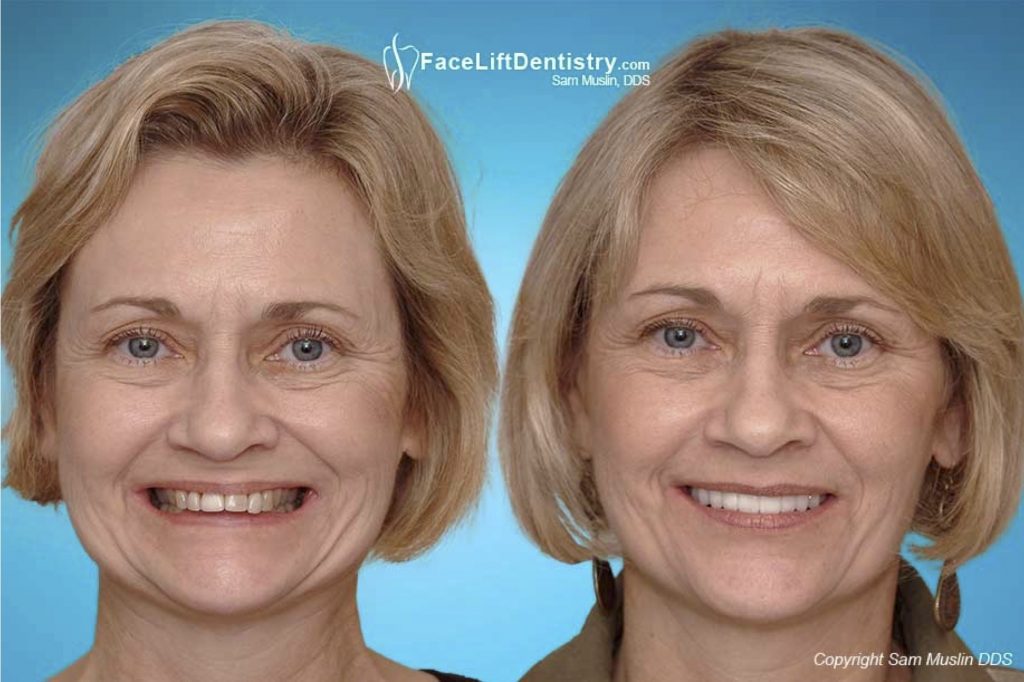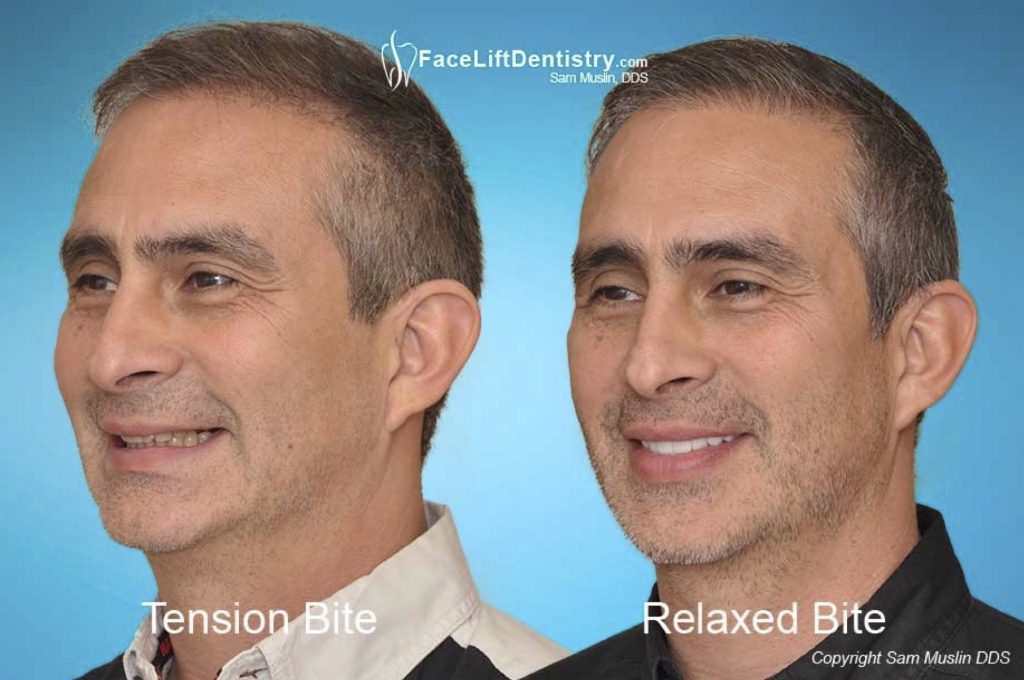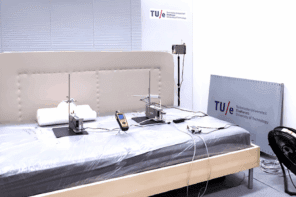Gray hairs and fine lines are usually the first signs of aging people notice; hair is dyed and creams that promise the elixir of youth liberally applied to the face. Many people don’t realize that one of the other key contributors to facial aging is the jaw.
The jaw position, i.e., where the upper and lower jaws meet (known as the ‘bite’), determines the overall face shape and appearance. A healthy ‘normal bite’ is when the upper and lower teeth sit neatly together, with neither substantially overlapping the other (the upper teeth should overlap the lower teeth a little). The teeth are perfectly aligned vertically and horizontally; the face is symmetrical, and the smile is natural and relaxed.
When the upper teeth protrude substantially over the lower teeth, this is known as an ‘overbite.’ Overbites are quite common and are usually the result of injuries, genetics, or childhood habits such as using a pacifier or sucking a thumb. An overbite makes the face appear short and round with a weak undefined chin, sunken cheeks, and an uncomfortable smile.
When the lower teeth protrude substantially over the upper teeth, this is known as an ‘underbite,’ which can create the appearance of a prominent chin. If some teeth tilt outwards towards the cheek, this is referred to as a ‘crossbite,’ and an ‘open bite’ is when the teeth don’t meet at the front, causing a stretched mouth and ‘gummy’ smile. All of these misaligned jaws contribute to facial aging.

Most people who are unhappy with their smile simply book an appointment with the orthodontist and sign up for braces. Although this is an effective treatment option, it requires long-term commitment and several dietary sacrifices. The main problem with cosmetic dentistry is that it doesn’t get to the root of the problem (or, in this case, the bones!); it merely provides some camouflage.
A jaw correction provides a youthful framework for the whole face. The skin under the jaw appears tighter, lips can appear fuller, and cheekbones are no longer sunken. An optimally aligned bite not only improves confidence, but it also has several dental and overall health advantages.
A misaligned bite results in stress on the jaw muscles, which causes tension to spread to the muscles in the neck, shoulders, and back. The joint where the upper and lower jaws meet is known as the temporomandibular joint. Disorders of this joint can cause headaches and even migraines. Jaw correction can reduce headaches, muscle aches and pains, sleep quality improvements, chewing (and therefore digestion), and speech.

A correctly aligned jaw is also important for good dental health. Misalignment can increase enamel erosion due to teeth grinding (causing painful sensitivity) and result in mouth breathing, which increases the risk of tooth decay (as mouth breathing prevents protective saliva covering each tooth).
Jaw correction can be achieved by undergoing jaw surgery to relocate the lower jaw. This procedure entails a recovery period of anything from 1–12 months, depending on how many separate surgeries are required. Although it is effective, there are several risks as with any surgical procedure, such as excessive blood loss, nerve injury that could lead to loss of sensation, or jaw fracture.
A safer non-surgical anti-aging treatment option to realign the jaw is Face Lift Dentistry. Patented JawTrac® and VENLAY® bite restoration technology are used to optimize the jaw’s position. X-rays, photos, and videos are taken of the patient’s face, and a computer simulation shows the patient what the end result should look like during the initial consultation. Results are achieved very quickly (usually within weeks), and there are minimal side effects.
Anyone that thinks they need cosmetic dentistry to correct or disguise minor dental imperfections or desires a more youthful facial profile should consider this non-surgical anti-aging treatment instead.




